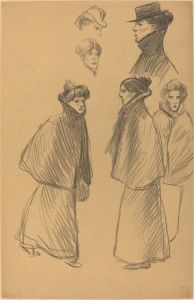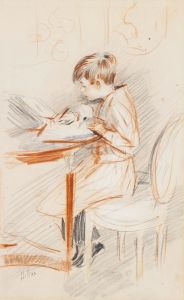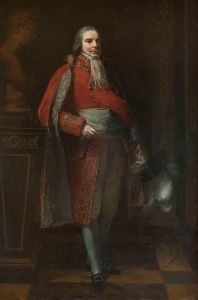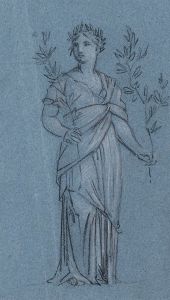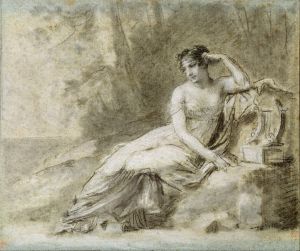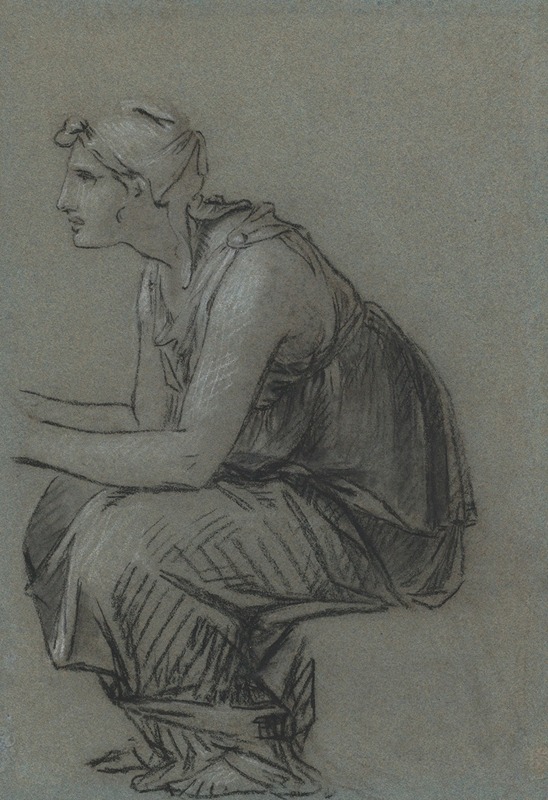
Study for Astyanax’s Nurse
A hand-painted replica of Pierre-Paul Prud'hon’s masterpiece Study for Astyanax’s Nurse, meticulously crafted by professional artists to capture the true essence of the original. Each piece is created with museum-quality canvas and rare mineral pigments, carefully painted by experienced artists with delicate brushstrokes and rich, layered colors to perfectly recreate the texture of the original artwork. Unlike machine-printed reproductions, this hand-painted version brings the painting to life, infused with the artist’s emotions and skill in every stroke. Whether for personal collection or home decoration, it instantly elevates the artistic atmosphere of any space.
Pierre-Paul Prud'hon was a French Romantic painter and draughtsman, renowned for his allegorical and mythological subjects, as well as his portraits. One of his notable works is "Study for Astyanax’s Nurse," which exemplifies his mastery in capturing the human form and emotion through his delicate and refined style.
Prud'hon was born on April 4, 1758, in Cluny, France. He studied in Dijon and later in Paris, where he was influenced by the works of the Italian Renaissance and Baroque artists. His style is often characterized by its soft, atmospheric qualities and a preference for chiaroscuro, which is the use of strong contrasts between light and dark to achieve a sense of volume and three-dimensionality.
"Study for Astyanax’s Nurse" is a preparatory drawing, which means it was created as part of the process of developing a larger, more finished work. This study reflects Prud'hon's meticulous approach to composition and his dedication to understanding the human anatomy. The drawing likely served as a preliminary exploration of form and pose, allowing Prud'hon to experiment with the arrangement and emotional expression of his subjects before committing to the final painting.
Astyanax, in Greek mythology, was the son of Hector and Andromache. He is often depicted in art and literature as a symbol of innocence and the tragic consequences of war, as he was killed during the fall of Troy. The nurse, a secondary character, would have been responsible for the care and protection of Astyanax, adding a layer of maternal tenderness and tragedy to the narrative.
Prud'hon's work is distinguished by its emotional depth and subtlety. In "Study for Astyanax’s Nurse," he likely explored themes of protection, vulnerability, and the bond between caregiver and child. His ability to convey emotion through posture and expression is evident in his studies, which often capture a moment of introspection or quiet interaction.
Throughout his career, Prud'hon was celebrated for his ability to blend classical ideals with Romantic sensibilities. His work was admired by contemporaries and later artists for its grace and emotional resonance. He was a member of the Académie des Beaux-Arts and received numerous commissions from the French court, including portraits of Napoleon Bonaparte and Empress Joséphine.
Prud'hon's influence extended beyond his lifetime, as his approach to drawing and painting continued to inspire artists in the 19th and 20th centuries. His studies, such as "Study for Astyanax’s Nurse," remain valuable for their insight into his artistic process and his ability to capture the human experience with sensitivity and precision.
In summary, "Study for Astyanax’s Nurse" by Pierre-Paul Prud'hon is a testament to the artist's skill in rendering the human form and exploring complex emotional themes. It reflects his unique blend of classical and Romantic elements, making it a significant piece in the study of his oeuvre and the broader context of art history.






